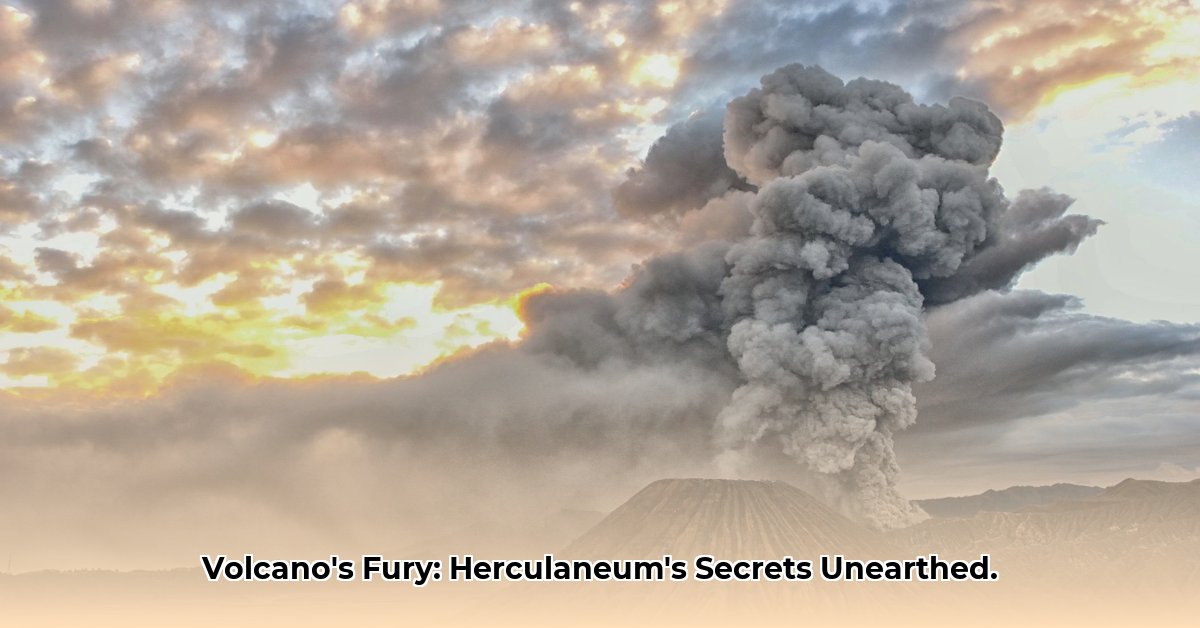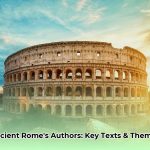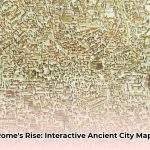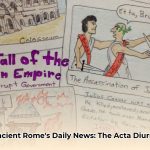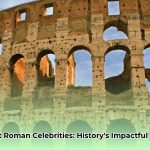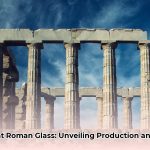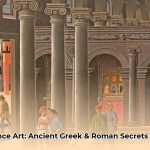Imagine stepping into the heart of an ancient Roman town, where everyday objects, intricate frescoes, and even loaves of bread are miraculously preserved, offering an unparalleled glimpse into a civilization lost to time. This is the profound reality of Herculaneum, an archaeological marvel tragically frozen by the catastrophic eruption of Mount Vesuvius in 79 AD. Far from being merely a footnote to its more famous neighbor, Pompeii, Herculaneum presents a unique and often superior window into Roman antiquity, compelling experts to continually piece together its intricate story. Consider exploring other ancient Roman cities for comparison. This once-vibrant resort town, favored by Rome’s elite, succumbed to nature’s fiery wrath, yet the specific mechanisms of its destruction simultaneously acted as the ultimate preservative, forever etching its inhabitants’ lives into volcanic material. Each new archaeological finding not only illuminates the story of that fateful day but also highlights the vibrant lives of the people eternally enshrined in ash.
Vesuvius’s Fury: Herculaneum’s Unique Cataclysmic End
Herculaneum, a prosperous seaside town approximately 4.5 miles (7.2 km) northwest of Mount Vesuvius, vanished almost instantaneously in 79 AD. The undeniable perpetrator was Mount Vesuvius, the same stratovolcano responsible for burying Pompeii. While both communities shared a devastating fate, the nature of Vesuvius’s destructive power differed significantly for each, leading to Herculaneum’s extraordinary and distinct state of preservation. This unique level of archaeological fidelity offers an unparalleled glimpse into the intricacies of Roman life, miraculously suspended in time by the very event that caused its demise.
A Tale of Two Destructions: Ash vs. Pyroclastic Flow
Both Pompeii and Herculaneum lay squarely in the path of Vesuvius’s infernal fury, yet the volcano delivered its catastrophic blow through contrasting means. Pompeii is famously recognized for being entombed under successive layers of ash and pumice, which solidified around structures and bodies, creating the poignant “casts” of its former citizens. Herculaneum, however, experienced a far more annihilating force: pyroclastic surges. These superheated avalanches, comprising scorching gases, pulverized ash, and rock fragments, hurtled down the volcanic slopes at speeds estimated at up to 100 mph (160 km/h) and temperatures reaching 930 °F (500 °C) or more.
The initial phase of the eruption, which began around 1:00 PM on August 24, 79 AD, saw a column of ash and pumice reach heights of 17-21 miles (27-33 km). Prevailing winds blew this material southeast, primarily affecting Pompeii. Herculaneum, lying west of Vesuvius, received only a light dusting of ash, which, ironically, prompted most inhabitants to flee.
The true devastation struck in the early hours of the next day, around 1:00 AM. The eruption column collapsed, sending a succession of six swift pyroclastic surges sweeping over Herculaneum. These surges immediately incinerated any living thing in their path, causing instantaneous death through fulminant thermal shock. Witnesses’ postures and skeletal analysis confirm extreme heat exposure; skulls exploded, bones and teeth cracked, and muscles contracted violently.
Paradoxically, the intense thermal energy and the rapid cooling of the ash and gases had a surprising outcome: they carbonized organic materials rather than incinerating them completely. This process effectively transformed items like wooden roofs, beds, doors, furniture, foodstuffs, and even delicate papyrus scrolls into a charcoal-like state, thereby preserving them with astonishing detail within a compact mass of tufaceous material up to 66 feet (20 meters) deep. This remarkable preservation offers Herculaneum a level of detail concerning daily life and architecture unmatched elsewhere in the ancient world.
A Buried Paradise: The Rediscovery and Ongoing Unveiling
The initial rediscovery of Herculaneum occurred almost by chance in the nascent stages of the 18th century. In 1709, during the drilling of a well by Prince d’Elbeuf to construct his villa, laborers inadvertently encountered the long-lost ruins of the ancient theatre, sparking widespread interest and a period of unsystematic “treasure hunting.” This serendipitous find served as the catalyst for more formalized, organized archaeological excavations that commenced in 1738 under the patronage of Charles III of Spain, supervised by engineers like Giovanni Antonio Medrano and Karl Weber.
These early excavations, often conducted via underground tunnels due to the deep, solidified volcanic layer, progressively brought to light lavish villas, grand public buildings, and, profoundly, the tightly clustered skeletons of hundreds of individuals. Between 1980 and 1982, the discovery of over 300 skeletons by the ancient shoreline (now inland due to geological changes) and in the so-called “boat houses” or fornici fundamentally shifted the prevailing belief that most inhabitants had escaped. These were individuals who desperately sought refuge, futilely attempting to flee the disaster by sea, only to be instantly killed by the overwhelming thermal shock of the pyroclastic flows. This chilling discovery continues to resonate, inviting ongoing contemplation about human vulnerability in the face of cataclysm.
Today, only a fraction of ancient Herculaneum, estimated at less than 30%, has been excavated. The focus has largely shifted from extensive new digs to prioritizing the preservation of already-uncovered portions, a testament to the site’s fragility and the challenges posed by the dense volcanic material.
The Villa of the Papyri: A Library Frozen in Time
Perhaps the most astonishing and significant discovery unearthed at the Herculaneum archaeological site is the unparalleled Villa of the Papyri. This extensive and opulent seaside villa, thought to have belonged to Lucius Calpurnius Piso Caesoninus, Julius Caesar’s father-in-law, once housed a vast private library. It contained hundreds, conceivably even thousands, of invaluable papyrus scrolls – the only ancient library to survive virtually intact.
The relentless pyroclastic surges, despite their overwhelming destructive power, concurrently served as an extraordinary preservative agent, charring the scrolls but protecting them from complete disintegration and decay. These remarkably preserved scrolls, though carbonized and brittle, represent an immense reservoir of ancient knowledge—primarily Greek philosophical works of Epicurean inspiration by authors like Philodemus of Gadara.
Experts are diligently engaged in the painstaking and meticulous process of deciphering these scrolls. Early attempts at unrolling them often resulted in damage. However, modern scientific advancements are revolutionizing this field. Computer-enhanced multispectral infrared imaging has helped make some ink legible, while X-ray phase contrast tomography (since 2015) has increased the contrast between carbon ink and papyrus, allowing researchers to begin reading sections without unrolling. Most notably, in 2024, an international contest called the “Vesuvius Challenge,” leveraging AI and machine learning, successfully revealed hundreds of Greek words across multiple columns of text, marking a monumental breakthrough in deciphering these ancient texts. Imagine the profound experience of holding a veritable book from the ancient world, miraculously salvaged from utter oblivion, and now, finally, readable.
A Glimpse into Roman Daily Life: Beyond the Cataclysm
Herculaneum offers a strikingly detailed impression of private life that is often difficult to achieve in other centers of the ancient world. Its unique preservation has allowed archaeologists to uncover architectural features and artifacts rarely seen elsewhere.
The ancient city’s layout is structured by intersecting east-west (decumani) and north-south (cardi) streets, dividing it into systematic blocks (insulae) and individual buildings with entrance numbers. Key residential structures include:
- The House of Argus: Notable for being one of the first multi-story buildings unearthed in such detail during 19th-century excavations, revealing a second-level balcony and wooden shelving.
- The House of the Bicentenary: Named after its discovery 200 years after the eruption, it features well-preserved wall paintings and a unique private chapel.
- The House of the Deer: A large, luxurious villa offering panoramic views that reveal the wealthy status of Herculaneum’s residents. It famously houses marble statues of deer.
- The House of the Mosaic Atrium: Known for its intricate mosaic flooring.
- The House of the Relief of Telephus: Showcases remarkable wall decorations and evidence of the surge’s power, with objects blown from their original positions.
Public buildings were equally significant:
- The Central Baths (Thermae): Built around the 1st century AD, these separate bathing areas for men and women served as crucial cultural and social hubs, showcasing advanced Roman engineering for water supply and heating.
- The Palaestra: A large sports ground with a central swimming pool and surrounding portico, demonstrating the Roman emphasis on physical activity and communal gathering.
- The Temple of the Augustales: Dedicated to the imperial cult, highlighting the city’s integration into the Roman system of governance and worship.
Beyond grand structures, Herculaneum offers intimate details of daily existence:
- Water Supply and Drainage: The city was directly connected to the Augustan-age Serino aqueduct, bringing water through lead pipes. A sophisticated main drain collected water from the forum, private impluviums, latrines, and kitchens.
- Food and Artisanry: Carbonized food items like bread, fruits, and nuts provide direct evidence of diet. Workshops and commercial houses reveal insights into local economies and trades.
- Skeletal Analysis: Scientific study of the more than 300 skeletons found, particularly those from the boat houses, has yielded fascinating insights. Stable isotope analysis shows dietary differences, with men consuming more fish and women more meat, eggs, and dairy. Evidence also suggests heavy physical labor from childhood and the presence of genetic diversity, indicating a multicultural community. Unlike Pompeii, where body casts were formed in ash cavities, Herculaneum’s intense heat vaporized flesh, leaving only skeletons, which are themselves invaluable for scientific study.
Facing the Future: Preserving Herculaneum’s Legacy
Today, Herculaneum holds the prestigious designation as a UNESCO World Heritage Site, drawing a considerable number of visitors and scholars from across the globe. However, this ancient Roman town faces substantial contemporary challenges that underscore the criticality of active preservation.
- Environmental Threats: Bradyseism, the geological phenomenon characterized by the slow sinking or rising of the ground, poses a persistent threat, with certain sections of the venerable town now partially submerged beneath current sea levels. Exposure to the elements, intensified by modern pollution and climate shifts, exacerbates the deterioration of excavated structures and artifacts.
- Urban Encroachment: The modern town of Ercolano lies directly above unexcavated portions of the ancient city, creating complex issues related to water damage from modern plumbing impacting ancient foundations and limiting future excavation potential.
- Tourism Management: While tourism is vital for funding, intensive visitation without proper management can contribute to wear and tear, vandalism, and the overall degradation of the site.
An ongoing, critical discourse revolves around the optimal strategies for reconciling the imperative to preserve this remarkably fragile archaeological site with the desire to ensure its continued accessibility and educational value for the general public.
Pioneering Preservation: Collaborative Efforts
Addressing the immense complexities of large-scale archaeological site preservation is a task no single entity can undertake in isolation. The Herculaneum Conservation Project (HCP) stands as a prime illustration of the profound efficacy of collaborative efforts. Launched in 2001, this private-public partnership, initially between the Packard Humanities Institute and the local archaeological superintendency, has evolved to provide expert support and formulate long-term conservation plans. The HCP now stands as an internationally recognized model of best practice in archaeological site conservation and management, focusing on:
- Stabilization: Implementing advanced, less intrusive preservation methods for excavated buildings and addressing water damage.
- Research: Conducting in-depth studies into the long-term effects of conservation treatments and developing innovative techniques, such as those applied to the famous wall paintings in the tablinum (dining room) of the House of the Bicentenary in partnership with the Getty Museum.
- Community Engagement: Actively involving local residents in tourism initiatives and vital conservation work, fostering a sense of shared ownership and responsibility, and promoting educational programs.
- Sustainable Tourism: Developing models that do not compromise ongoing conservation efforts, ensuring the site’s longevity for future generations.
Current archaeological excavations continue to meticulously re-evaluate and rewrite the historical narrative surrounding Mount Vesuvius and its profound, devastating impact. Furthermore, in-depth analyses of the human skeletal remains and the ongoing deciphering of the papyri promise to yield novel and critical details pertinent to the dietary habits, overall health status, and intricate social stratification of Herculaneum’s ancient citizenry, continuously enriching our understanding of the Roman world.
Journey Through Time: Essential Tips for Visiting Herculaneum
Planning a visit to Herculaneum is an excellent choice for anyone interested in Roman history. This ancient site offers a remarkably preserved and generally less crowded experience compared to its more famous counterpart, Pompeii. Understanding the best way to approach your visit can significantly enhance your journey through time.
Planning Your Trip
Effective planning is key to maximizing your Herculaneum experience. The site is easily accessible and offers a unique view of Roman daily life.
Getting There and Getting Around
For optimal convenience, the Circumvesuviana train provides a direct and economical route from major hubs like Naples or Sorrento, making the journey straightforward. Securing your tickets in advance, particularly if traveling during peak tourist seasons, is a sensible strategy; the Campania Express service, for instance, guarantees a comfortable seat. Upon arriving at the Ercolano Scavi station, clear signage directs visitors along Via IV Novembre, which leads directly to the archaeological site entrance, a pleasant 10-15 minute walk.
Timing is Everything
Visiting during the shoulder seasons—typically late spring (April-May) or early fall (September-October)—offers the advantage of more pleasant weather conditions coupled with noticeably fewer tourists. Furthermore, arriving promptly early in the morning consistently proves to be a superior strategy, allowing you to bypass the bulk of the crowds and avoid the intensity of the midday heat, especially during the summer months. Check official opening hours before your visit, as they can vary seasonally.
What to Expect Inside
Herculaneum is far more than just a collection of ancient ruins; it stands as a testament to the extraordinary preservative power of the pyroclastic flow that engulfed it centuries ago. This devastating event resulted in the astonishing preservation of organic materials, including intact wooden structures, pieces of furniture, and even remnants of ancient food items. You will encounter details and artifacts here that are rarely, if ever, found at other archaeological sites, offering unparalleled insights into the domestic and civic life of Romans.
Must-See Spots
Several key locations within Herculaneum offer particularly striking insights into its past:
- The House of Neptune and Amphitrite: Showcases remarkably intricate and vibrantly colored mosaics, including spectacular glass paste mosaics.
- The Samnite House: Provides a vivid representation of an aristocratic Roman dwelling’s grandeur, featuring traditional architectural elements and a well-preserved atrium.
- The Thermal Baths (Central and Suburban): These exceptionally preserved bath complexes invite visitors to imagine the daily rituals and leisure activities of the ancient inhabitants, with intact changing rooms, steam rooms, and cold plunge pools.
- The Decumanus Maximus: The main east-west street, lined with shops and houses, offering a sense of the city’s bustling commercial heart.
- The Skeletons in the Boat Houses (Fornici): A deeply poignant and sobering area where the skeletal remains of hundreds of victims are displayed as they were found, providing a stark reminder of the eruption’s immense and devastating power and the desperate final moments of those who sought refuge.
What to Bring
To ensure a comfortable and productive visit, pack accordingly. Comfortable walking shoes are absolutely essential, as you will be covering a significant amount of ground on uneven ancient pavements. Staying hydrated is crucial, so remember to bring water, especially during the warmer months, as on-site facilities can be limited. Given the Mediterranean climate, sunscreen and a hat are highly recommended to protect against intense sun exposure. Of course, a camera is indispensable for capturing the enduring memories of this unique site. Ideally, a small backpack will facilitate easier movement around the extensive archaeological park.
Enhancing Your Experience
While simply walking through Herculaneum is an enriching experience, there are ways to deepen your understanding and appreciation of this historic site.
Consider opting for a guided tour; local guides often provide invaluable insights into the history, architectural nuances, and archaeological significance of the site, bringing the ruins to life with their expertise. Plan to allocate two to three hours for a comprehensive visit, as there is a wealth of details and areas to explore, allowing ample time for reflection. Additionally, enhancing your visit by combining it with a trip to the National Archaeological Museum in Naples (MANN) is highly recommended. The museum houses an incredible and extensive collection of artifacts recovered from both Pompeii and Herculaneum, offering crucial context and showcasing the finest objects (sculptures, frescoes, everyday items) that have been removed from the sites for preservation.
Herculaneum vs. Pompeii: A Complementary Experience?
The question of whether Herculaneum surpasses Pompeii in significance or visitor experience often arises and ultimately remains a matter of personal preference. However, a brief comparison can shed light on their distinct characteristics:
| Feature | Herculaneum | Pompeii |
|---|---|---|
| Preservation | Higher degree of organic material preservation (wood, food, papyri) | More extensive but less well-preserved overall; famous for plaster body casts |
| Size/Scope | Smaller, more compact, and intimate | Larger, sprawling city with grand public spaces (amphitheater, forum) |
| Crowds | Generally less crowded, allowing for a more reflective experience | Typically more crowded, especially in peak season |
| Accessibility | More compact and easier to navigate, better for limited time/mobility | More spread out, can be challenging to cover entirely in one visit |
| Social Class | Primarily wealthier, elite residents; reflects a resort town’s opulence | More diverse representation of social classes, from grand villas to humble shops |
Some experienced travelers suggest visiting Pompeii first to gain a broad contextual understanding, while others contend that Herculaneum stands alone as an utterly unforgettable experience due to its unique preservation. Many argue that visiting both offers a truly comprehensive understanding of the Vesuvius eruption’s impact and ancient Roman life. Whichever choice you make, prepare to be profoundly amazed. The sheer impact of witnessing either of these ancient sites is truly incredible, transcending any comparative opinions.
Herculaneum’s compelling narrative extends far beyond its ancient past; it profoundly speaks to our collective future. By continually embracing innovation, fostering robust collaboration, and maintaining a forward-looking, long-term vision, we can collectively ensure that this truly remarkable archaeological site continues to inspire, educate, and offer invaluable insights for generations yet to come. The effort to unlock Herculaneum’s remaining secrets is an enduring testament to humanity’s quest to understand its past and safeguard its irreplaceable heritage.
